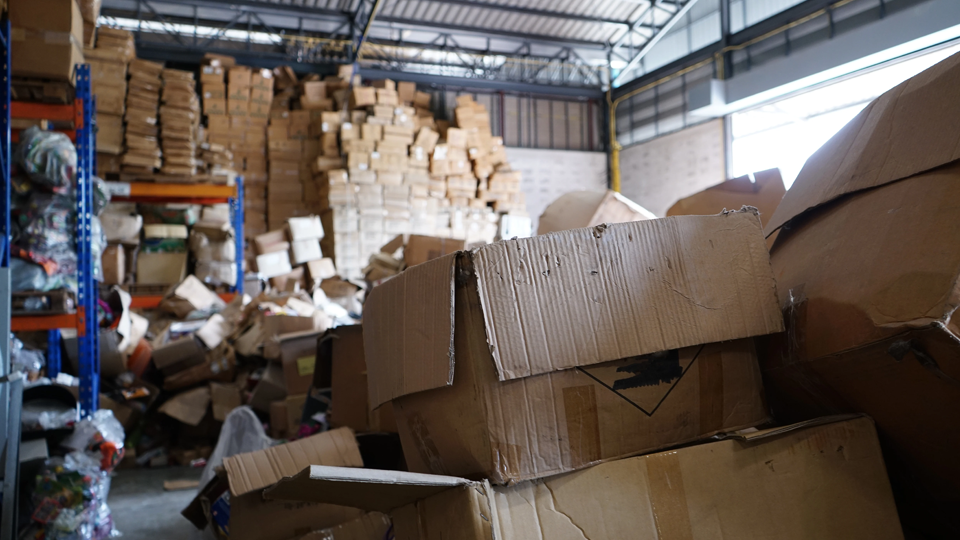
The COVID-19 pandemic disrupted supply chains across the globe as many businesses were forced to slow down or halt their operations altogether. Thanks to the long-awaited rollout of vaccines, we’re starting to see a positive trend upward, but it will take some time to fully recover from the ravages caused by the coronavirus outbreak. As an eCommerce business owner, you likely experienced disruptions in your shipping process in 2020 , and maybe even in 2021. The best thing you can do for your business is to take steps to prevent it from happening again.
The Impact of COVID-19 on Supply Chains
In the first few months of the pandemic lockdown, consumers rushed to buy out cleaning supplies, toilet paper, meat, and other household staples. This panic buying resulted in increased demand and a shortage of goods, leaving many without the necessary supplies.
With the pandemic well underway, many industries closed down, causing labor shortages that further exacerbated issues within supply chains. More than a year after the outbreak, logistics providers still need employees as they strive to develop creative solutions to address the changes in consumer spending habits. Furthermore, statewide lockdowns and new regulatory hurdles caused anyone involved in business logistics to suffer many sleepless nights as they worried about the future.
While the pandemic presented quite a challenge for eCommerce business owners, new opportunities are helping build stronger supply chains in a post-pandemic world.
Contact us to discuss your order fulfillment needs.

Post-Pandemic Questions to Ask About Your Logistics
The pandemic exposed the vulnerabilities present within supply chains, from poor production management to limited inventory and inconsistent order fulfillment. It also shined a light on how disruptions could debilitate even longtime businesses. However, it’s unlikely that the COVID-19 pandemic will be the last economic catastrophe to hit. This makes having a plan to strengthen your processes even more important. Here are a few questions you should ask about your own supply chain before you start making changes to adapt to new realities in 2021 and beyond.
Does Your Supply Chain Need Diversification?
Are you too reliant on a single supplier or distributor/fulfillment partner? At the start of the pandemic, Chinese factories started to close down, so manufacturers began using other suppliers. This was devastating for businesses that didn’t utilize multiple sources to obtain or ship their products. By diversifying your supply chain, you’ll know that you have more than one place to turn to in the event of another global emergency.
How Much of Your Supply Chain is Digitized?
To what extent does your supply chain utilize digitization? The pandemic revealed many supply chains have outdated procedures and could benefit from deepening digitization. A supply chain with interconnected digital processes can help you anticipate potential disruptions and respond before they impact your operations. Digitizing with automation and artificial intelligence will further help you enhance supply chain management while increasing sales, maximizing efficiency, and improving order fulfillment times.
Does Your Supply Chain Reflect Your Customers?
The pandemic shifted the shopping habits of customers, leaving many warehouses full of products people weren’t buying. If a supply chain doesn’t reflect the current demands of customers, a company will be unable to meet their needs, potentially resulting in a loss of business. It’s important to align marketing strategies with your supply chain so that you can keep high-demand products moving and protect your brand.
Creating a Post-Pandemic Supply Chain
If the COVID-19 pandemic caused problems with your supply chain, there are a couple of things you can do to ensure continuity in the future. Here is what you need to do to make your supply chain more resilient.
Increase Supply Chain Digitization and Automation
As the pandemic continues, businesses around the world are looking for more innovative technologies to automate their supply chain. Digitization allows you to track what is occurring within the supply chain using key technologies like cloud computing, artificial intelligence, robotics, inventory management systems, and more. With it, you can automate processes that once took a lot of time, like inventory counts and shipping. Full-scale digitization and automation create start-to-finish visibility across each stage of order fulfillment, from manufacturing and storage to inventory control and order processing.
Diversify Your Suppliers and Fulfillment Partners
It’s true that relying on a single region or having a small number of large contracts helps minimize overhead for your business. The drawback to this strategy is you’ll experience a significant interruption to your supply chain should your partners experience some kind of disruption as seen during the COVID-19 pandemic. To create greater resiliency, companies are working with manufacturers across the globe to protect against the impact of unexpected shutdowns. With multiple sources for production and distribution, you can keep operations running.
Outsource More
In 2020, companies saw how outsourcing their shipping to a third-party logistics partner could benefit their operations. They were able to meet the increased consumer demand faster than they ever could on their own. Outsourcing also saves time by allowing you to focus on your daily operations. Additionally, providers have established relationships with shipping carriers, which provides you with volume savings. Since you can fulfill orders faster by turning over the work to a professional 3PL provider, you’ll improve the customer experience. If you haven’t ever considered working with a logistics company, there is no better time to do so.
Increase Supply Chain Visibility
Supply chain visibility became a major issue during the pandemic. After factory closures, closely tracking products was near impossible. Now that production is improving, companies are looking for a better way to monitor progress within the supply chain. They rely on reliable data to give them end-to-end visibility. This will allow you to know about issues at any stage, whether it’s low inventory or issues with shipment. With digitization, business owners can increase their own security by having clearer visibility regarding their products. Additionally, having more transparency in the supply chain can give you the information you need to address customer concerns better.
Improving Supply Chain Capacity and Flexibility
As you build your supply chain, you should ensure it is flexible enough to adapt to rapid changes in demand. This is especially important as we deal with the ongoing shocks from the pandemic’s aftermath. We still don’t know the full impact COVID-19 will have, so businesses need to be ready to address changes in buying patterns. If your supply chain can’t be reconfigured along the way, it needs more work. With the right partner, you can have nearly unlimited capacity to meet consumer needs.
Build a Supply Chain for 2021 and Beyond with Ship My Orders
To mitigate damage in a post-pandemic society, business owners must build a robust supply chain that can keep up with changing consumer demands. At Ship My Orders, we offer a fully integrated, end-to-end service as your logistics partner. Contact us today to find out how we can assist you with your order fulfillment needs.
Logistics shouldn’t be difficult. We make it easy.


-1.png)


